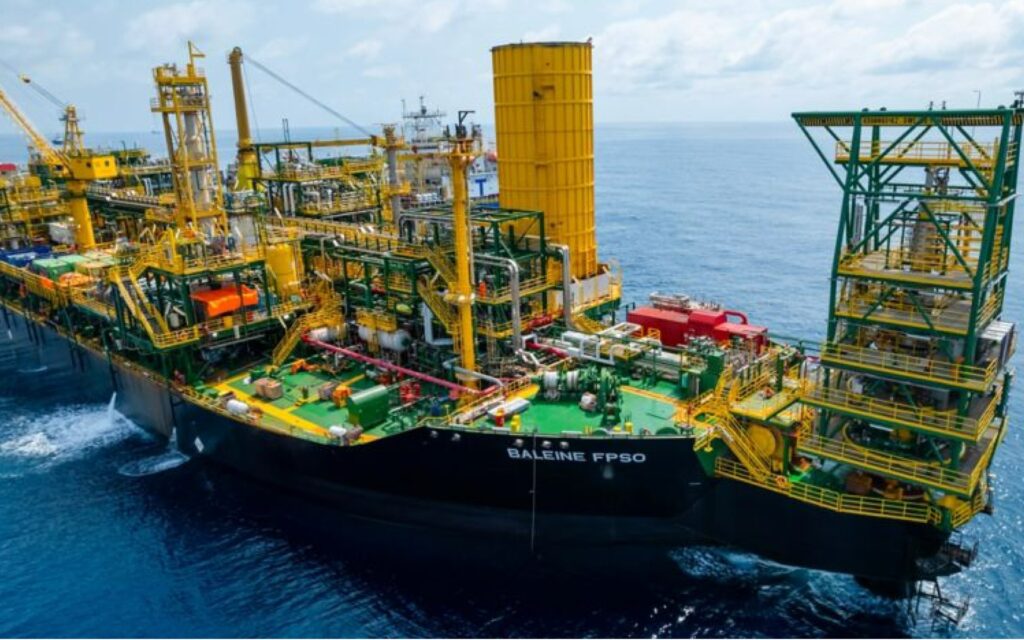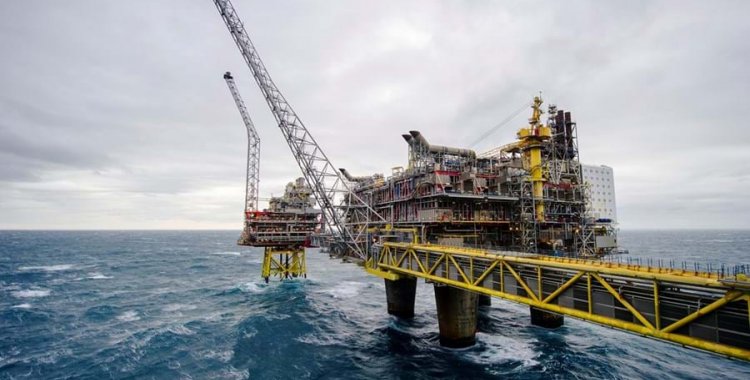At a Glance
- Africa’s major oil producers are leveraging vast reserves to boost economic growth, diversify revenues, and address global energy demands amid rising oil production targets.
- Political instability, infrastructure gaps, and price volatility challenge oil producers like Libya and Algeria despite significant contributions to GDP and export revenues.
- Countries like Egypt focus on energy efficiency, sustainability, and reforms to enhance oil production, attract investments, and strengthen long-term economic growth.
The oil industry plays a pivotal role in Africa’s economic growth, attributed to vast energy reserves amid a rising energy deficit. Oil production takes center stage contributing to the GDP of many African nations.
Globally, demand for crude oil is expected to be on the rise, climbing to 115 mb/d by 2025, with an average growth of 1.7 percent annually from 2002 to 2025. Amid this growth, Organisation for Economic Co-operation and Development (OECD) countries are poised to dominate global oil demand.

For African countries, oil exportation is key for funding infrastructure, social services, and diversifying their economies. With OPEC projecting an increase in oil demand of 1.93 mb/d in 2024 and 1.64 mb/d in 2025, Africa’s major oil exporters face both challenges and opportunities that are central to the continent’s energy transformation.
As these nations navigate these dynamics, they have the potential to drive sustainable development and support global energy markets. Through strategic investments, stronger environmental standards, and international partnerships, Africa’s oil industry can be a catalyst for significant change.
Shore Africaexplores the five largest oil-producing countries in Africa for 2024 and their impact on economic growth.
- Nigeria: Africa’s top oil producer (1.48 million b/d)
Nigeria targets 2.06 million barrels/day (b/d). While oil and gas drive exports, diversification into agriculture, telecoms, and services is expanding to stabilize the economy.
Nigeria operates four refineries, led by the Dangote Refinery—the world’s largest single-train refinery (650,000 b/d). The $20.5 billion project aims to reduce fuel imports. Abdulsamad Rabiu’s BUA Refinery adds 200,000 b/d, boosting local output.
Major oil states include Rivers, Delta, Bayelsa, and Akwa Ibom. Lagos remains the economic center, with Abuja as the capital. Nigeria’s $362.81 billion GDP reflects a blend of oil and services.
November 2024 saw a 15.3 percent production boost to 1.48 million b/d, outpacing Algeria (908,000 b/d) and Congo (268,000 b/d). Despite 13.3% year-on-year growth, crude theft and sabotage continue, keeping output below OPEC’s 1.5 million b/d target.
Oil underpins Nigeria’s $500 billion economy but strains public finances. Q3 2024 GDP grew 3.46 percent, driven by services, though oil volatility widens deficits. Nigeria’s output impacts global oil markets.
Consistently surpassing 1.5 million b/d could boost fiscal health and OPEC influence. Nigeria’s 2024 performance underscores its oil-driven potential and persistent structural challenges. - Angola: Africa’s second-largest oil producer
Angola holds steady at 1.1 million barrels per day (bpd) as of November 2024, with reserves of 9 billion barrels, ranking 18th globally. Production is set to rise to 1.3 million bpd by 2025, driving GDP growth from 2.4 percent in 2024 to 2.8% in 2025.
Oil generates 90 percent of export revenue, supporting a $113.3 billion GDP ($374.9 billion PPP). To curb reliance, Angola is investing in agriculture, mining, and manufacturing. Key infrastructure includes refineries in Luanda (45,000 bpd) and Cabinda (16,000 bpd), with planned expansions in Lobito and Namibe set to add 600,000 bpd.
Angola’s OPEC exit in January 2024 grants output flexibility but exposes aging infrastructure and underinvestment. The shift aligns with national priorities to balance production and economic goals.
While Angola remains a steady global oil player, domestic revenues are vital for infrastructure and public services. Sustainable growth hinges on structural reforms and non-oil investments, ensuring long-term stability amid global shifts. - Libya: Africa’s third-largest oil Producer
Libya’s oil output fluctuated sharply in 2024, reflecting political and economic instability. In November, production rose to 1.238 million bpd from 1.097 million bpd in October. This followed a 63 percent drop in August due to oilfield shutdowns amid political unrest. By December, the National Oil Corporation (NOC) reported output hitting 1.4 million bpd, surpassing targets. Oil underpins Libya’s economy, contributing heavily to government revenue and exports. Q1 2024 oil earnings reached $6 billion, with annual revenue projected at $25 billion. NOC aims to exceed 1.5 million bpd by year-end and hit 2 million bpd in 2025.
Despite growth, Libya’s oil sector grapples with political instability, weak infrastructure, and security risks. The IMF forecasts 8 percent GDP growth in 2024, contingent on stable output and prices, but warns of future fiscal and external pressures. Economic diversification and reforms are essential to reduce oil dependency and ensure long-term stability. - Algeria: Africa’s 4th-largest oil producer (908,000 b/d)
Algeria holds 12.2 billion barrels of proven reserves, producing 1.1 million b/d and exporting 540,000 b/d. Offshore exploration remains limited, with all reserves onshore.
Alongside hydrocarbons, Algeria is expanding into renewables, mining, and agriculture.
The Skikda refinery, Algeria’s largest, processes 355,000 b/d and is operated by Sonatrach.
Major oil fields include Hassi Messaoud, Zarzaïtine-Edjeleh, and El-Borma near the Tunisian border.
Algeria, with 46.28 million people, posted a $266.78 billion GDP in 2023. Oil and gas account for 89 percent of export earnings.
November 2024 crude production averaged 908,000 b/d, slightly below October’s 909,000 b/d.
Algeria extended a 48,000 b/d voluntary output cut through December 2024, aligning with OPEC+ measures to stabilize prices.
Algeria’s oil dependence leaves it vulnerable to price swings, with high revenues tempered by risks to global growth. - Egypt:
Egypt’s crude oil production fell to 526,000 barrels per day (bpd) in August 2024, down from 537,000 bpd in July—the lowest output since 1994.
Despite this, Egypt aims to boost daily crude output by 9 percent in fiscal year 2024/2025, targeting 637,000 bpd. The oil and gas sector remains vital to Egypt’s economy, with government strategies focusing on energy efficiency and sustainability through the Energy Efficiency Strategy 2022-2035, which seeks to cut energy use by 10 percent by 2027 and 18% by 2035.
In July 2024, Egypt signed $340 million in agreements with international companies to expand oil and gas production in the Mediterranean and Gulf of Suez. However, power blackouts caused by gas shortages led to resumed LNG imports, with $1.2 billion allocated for initial energy purchases, including US-sourced LNG.
To tackle challenges, Egypt is attracting investments and implementing reforms to enhance sector efficiency and sustainability, with advanced technologies playing a critical role in optimizing production and ensuring long-term economic growth.





